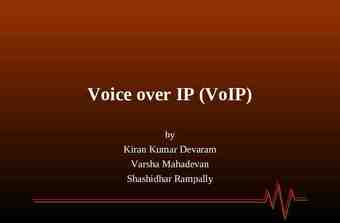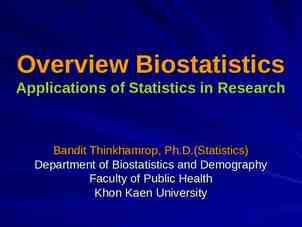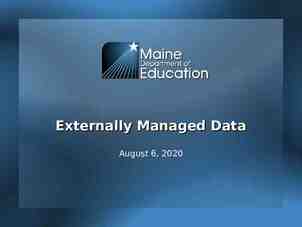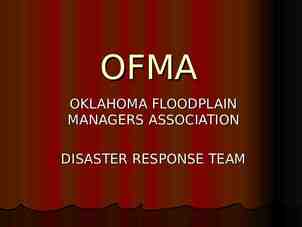Pest Risk Analysis (PRA) Training CFIA-ACIA CFIA-ACIA International
41 Slides971.00 KB

Pest Risk Analysis (PRA) Training CFIA-ACIA CFIA-ACIA International Plant Protection Convention (IPPC)

Overview of Pest Risk Analysis (PRA)

Outline Who does PRA? What is PRA? Where is PRA done? When is PRA done? Why is PRA done? How can PRA be done?

But first .

What is Risk? Combination of likelihood and impact – How likely an event is to happen, and how much of an effect it would have.

Crossing the road 1. The likelihood of being hit crossing from A to B Impact on health of being hit by fast car A B C 2. The likelihood of being hit crossing from C to D Impact on health of D being hit by a slower car

What is Risk? Combination of likelihood and impact – How likely an event is to happen, and how much of an effect it would have. So – If an event cannot occur it cannot have an impact and there is no risk. – If an event is likely to occur but it will have no impact then there is no risk.

Risk matrix High Impact Mediu m Low low medium Likelihood high

Risk matrix Very high High Impact Medium Low Very low Very low low medium Likelihood high Very high

Representing Risk 100 75 Impact 50 25 0 0 0.2 0.4 0.6 Likelihood 0.8 1

Who does PRA? Nations (NPPOs) Regional Plant Protection Organisations (RPPOs) Trading Blocs (EU, ECOWAS,SAARC ) People

What is PRA? The process of evaluating biological or other scientific and economic evidence to determine whether a pest should be regulated and the strength of any phytosanitary measures to be taken against it - Glossary of phytosanitary terms, ISPM No. 5

What is PRA? Science-based process that provides rationale for implementing phytosanitary measures for a specified area Systematic approach to decide if a pest should be managed using legislation

What is a plant pest? Plant pest – Any species, strain or biotype of plant, animal or pathogenic agent injurious to plants or plant products - Glossary of phytosanitary terms, ISPM No. 5 organism harmful to plants including bacteria, fungi, insects, mites, other plants, nematodes and viruses. IPPC recognizes direct and indirect plant pests

Direct and indirect pests Direct pests: consume or cause diseases to plants Colorado beetle Phytophthora ramorum Pine wood nematode Indirect pests: indirectly injurious to plants, e.g. through competition, or by harming those species which are beneficial to plants, such as earthworms or pollinators Japanese knotweed New Zealand Flatworm Southern hive beetle Aethina tumida

IPPC pests of plants IPPC recognizes two categories of regulated plant pests – Quarantine pest – Regulated non-quarantine pest

Quarantine Pest a pest of potential economic importance to the area endangered thereby and not yet present there, or present but not widely distributed and being officially controlled For the endangered area the pest – Is not present there and has potential economic importance, or – Is present but not widely distributed and is officially controlled

Regulated Non-Quarantine Pest A non-quarantine pest whose presence in plants for planting affects the intended use of those plants with an economically unacceptable impact and which is therefore regulated within the territory of the importing contracting party – Presence in plants for planting has an unacceptable impact so is regulated – But not regulated as a quarantine pest since usually the pest is widely distributed

Where is PRA done? Office based Information needed Library

Why is PRA done? To evaluate and manage risk from specific pests and internationally traded commodities – Identify and assess risks to agricultural and horticultural crops, forestry and the environment from plant pests – To create lists of regulated pests – To produce lists of prohibited plants and plant products – To assist in identifying appropriate management options

Why is PRA done? Answers following questions: – Is the organism a pest? – What is the likelihood of the entry and establishment? – Might the pest have an unacceptable impact? (economic, environmental, social) – If so, what can be done to avoid / inhibit unacceptable impacts?

When is PRA done? (Initiation) 3 Ps to initiation Pest Pathway Policy

Pest-initiated PRA Following detection of pest in consignments Outbreaks inside or outside of the PRA area Request for pest to be imported for research Overseas pest spread Identification of an organism not previously known to be a pest Identification of a pest that may require phytosanitary measures

Pest-initiated PRA Uses a pest as the basis for the PRA All possible pathways need to be considered Thrips palmi (Thysanoptera)

Pest-initiated PRA No. of notifications 200 150 100 50 0 1994 1995 1996 1997 1998 1999 2000 Year Data source: EU FVO Office, Notifications of non compliance

Pest-initiated PRA other 3% Caribbean 5% Africa 13% SE Asia 79%

Pest-initiated PRA Consult with Thai Ministry of Agriculture Require production site inspections certified free from T. palmi, or Appropriate treatment (fumigation) of orchids Trade continues Measures in place since February 1998 Continued monitoring shows effectiveness

Pathway-initiated PRA Commonly new trade pathways Identification of a pathway that presents a potential pest risk

Pathway-initiated PRA Uses a pathway as the basis for the PRA Additional PRAs are necessary for any pests that are identified as potential quarantine pests CFIA-ACIA

Pathway-initiated PRA Initiation via new trade request Information gathering – Books & journals – Abstracting journals – On line literature searches – Electronic sources – CABI Crop Protection Compendium – World Wide Web

Pathway-initiated PRA Graphognathus (Naupactus) leucoloma was identified as potentially serious invertebrate – from S. America to USA, S. Afr., Aus. & NZ – highly polyphagous (350 hosts) – parthenogenic – larvae are root feeders – low densities causes yield loss – much of Europe suitable for establishment

Pathway-initiated PRA Conditions included – use of certified seed – free from Naupactus leucoloma – free from Synchytrium endobioticum – free from Ralstonia solanacearum – free from Globodera pallida & G. rostochiensis Imports – 4,500 tonnes imported – No quarantine pests and diseases detected.

Policy-initiated PRA Review or revision of existing phytosanitary policies and priorities

How is PRA done? 1. Initiation (3 Ps) 2. Pest risk assessment 3. Pest risk management Risk communicati on

Pest risk assessment Three step process – Categorization of individual pests – Assessment of the probability of introduction and spread – Assessment of the potential economic consequences of the introduction and spread

Pest risk management Defined as: – the evaluation and selection of options to reduce the risk of introduction and spread of a pest. [ISPM No. 11] To achieve an appropriate level of protection, governments must balance measures to counter assessed risk, against obligations to minimise negative trade effects PRA aims to ensure the decisions will be wellinformed, transparent and neutral

Pest risk communication Not a discrete stage of PRA Continuous throughout PRA Purpose is to reconcile the views of scientists, stakeholders, politicians, etc in order to – Achieve a common understanding of the pest risks – Develop credible pest risk management options

Documentation Supports the IPPC key principle of transparency Also, the main elements to document are outlined in ISPM No. 11: – – – – – – – Purpose of the PRA Pest, pest list, pathways, PRA area, endangered area Sources of information Categorized pest list Conclusion of risk assessment Risk management options identified Options selected

Breakout session - Terminology

Breakout No. 1 - Terminology Purpose: To acquire familiarity and understanding of phytosanitary terms and definitions which are used by the IPPC contracting parties for official phytosanitary purposes

Terminology Matching Table TERMS Endangered area DEFINITIONS PARTICIPANT’S NAME 2 Alan 19 Maya Introduction Pest free place of production Plant products Official control Pathway Entry (of a consignment)






